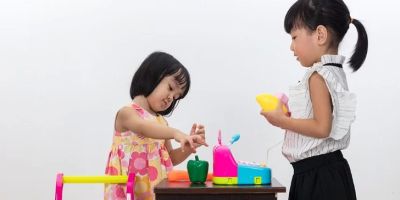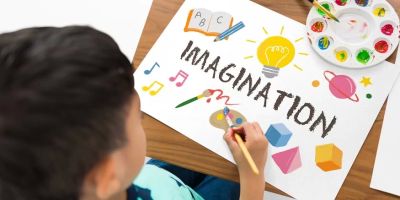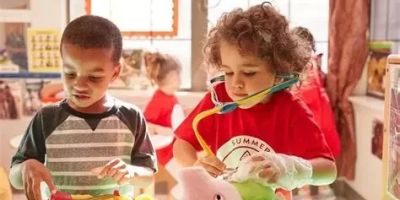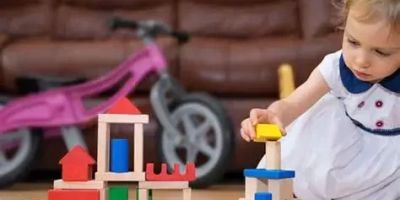Enhancing Learning with Educational Apps and Physical Toys
1. The Power of Combining Physical Toys and Educational Apps
As a parent, I’ve always believed in the importance of hands-on play. But when I discovered how educational apps can complement physical toys, it felt like a whole new world opened up for my child. I started to realize how the combination of traditional toys and modern apps could create a powerful learning experience. Educational apps offer interactive ways to engage kids while helping them develop skills that align perfectly with the physical toys they already use.
For example, my son loves his building blocks. He could spend hours stacking them, imagining new structures. But when we added an educational app that encouraged him to replicate designs or solve puzzles with the blocks, it turned from play into an interactive learning activity. Apps provide that extra layer of engagement that stimulates children’s brains, building cognitive skills and enhancing their understanding of shapes, numbers, and colors in a way that pure physical play sometimes can't.
2. How Educational Apps Support Cognitive and Motor Skills
Educational apps aren’t just games on a screen; they offer tools that can develop both cognitive and motor skills. One of the most striking benefits I noticed in my child’s playtime was how the apps helped him refine his fine motor skills. For example, using a digital drawing app that accompanies a set of toy crayons or paints encourages him to practice control and precision in his hand movements. This integration of digital and physical play helps him connect the dots between what he’s doing in the real world and what he’s learning on the screen.
Apps can also introduce children to concepts such as patterns, logic, and cause-and-effect reasoning, which align with the skills they develop while playing with toys. When he built a car track with his physical toys and then used an app to simulate driving cars on that track, he could better understand how direction, speed, and timing work. It was amazing to see the app turn a simple toy experience into a more immersive and educational journey.
3. The Best Educational Apps to Pair with Physical Toys
After exploring various options, I found some fantastic educational apps that perfectly complement physical toys. Here are a few of my top recommendations that you can consider for your child:
3.1 Toca Boca Series
As a parent, I love the Toca Boca series. These apps are designed with children in mind, offering fun, engaging environments where kids can create their own stories and scenarios. Whether it’s Toca Kitchen, Toca Nature, or Toca Life, these apps pair beautifully with physical toys. For instance, the Toca Kitchen app can complement a child’s toy kitchen, allowing them to experiment with virtual food while learning about cooking, nutrition, and creativity.
3.2 Osmo Genius Kit
The Osmo Genius Kit is a game-changer. Combining physical play with a tablet, it includes puzzles, words, and even drawing exercises that enhance creativity and problem-solving skills. What’s brilliant about Osmo is that it directly integrates with tangible items like letter tiles and drawing pads, making it an immersive learning experience that blends seamlessly with a child’s playtime activities.
3.3 Sphero Edu
If your child is interested in robotics, then Sphero Edu is the perfect educational app. It pairs with a physical robot ball, teaching kids how to program and control the ball through coding challenges. The app takes physical play a step further by allowing children to understand basic programming concepts while interacting with their robot. This combination of digital learning and physical play really helps children develop problem-solving, critical thinking, and creativity skills.
4. The Impact of Educational Apps on Emotional Development
While cognitive and motor skills are crucial, emotional development is equally important. Educational apps often feature characters, stories, and activities that encourage children to explore their emotions and social behaviors. For example, certain apps help children understand empathy, teamwork, and conflict resolution—skills they can then apply in real-life situations while playing with others. I remember when my daughter played an app that revolved around helping characters solve problems. She quickly started to apply these skills in her interactions with her friends, teaching her valuable social lessons.
Moreover, the app’s reward systems or progress tracking also provide children with a sense of accomplishment, which can boost their self-esteem and motivation. It’s this blend of learning and emotional growth that makes combining educational apps with physical toys such a potent formula for childhood development.
5. How to Choose the Right App for Your Child
Choosing the right educational app can be overwhelming, but it doesn’t have to be. I always consider a few key factors when selecting an app for my child. First, I make sure that the app is age-appropriate. The last thing I want is an app that’s too difficult or too simple for them. Next, I look for apps that are interactive and encourage creativity rather than just passive play. Lastly, I want to ensure the app provides educational value—whether it's teaching letters, numbers, problem-solving, or even social skills.
It’s also important to look at the reviews and ratings of the app before downloading it. Reading about other parents’ experiences can be helpful in determining whether the app delivers on its educational promises. And, of course, testing out the app yourself is always a great way to gauge its value before introducing it to your child.
6. How I Integrate Apps and Toys in Daily Learning
One of the most fun and rewarding parts of this journey is how I integrate educational apps and physical toys into our daily routines. For example, after my son completes a task in a learning app, I’ll encourage him to replicate that experience with his physical toys. If he solved a math problem in an app, we’ll count objects in his toy set or build something based on the designs he saw in the app.
This integration has created a balanced learning environment at home, where both digital and physical play contribute to his development. Whether it's building structures with blocks after watching a virtual design tutorial or playing an educational game after a fun toy scavenger hunt, combining the two creates an engaging and effective learning experience.
Looking ahead, I’m excited to continue exploring new apps that complement the physical toys my children love. It’s incredible to see how technology can enhance learning without replacing the importance of hands-on play. The future of educational play is bright, and I’m thrilled to be part of it!





